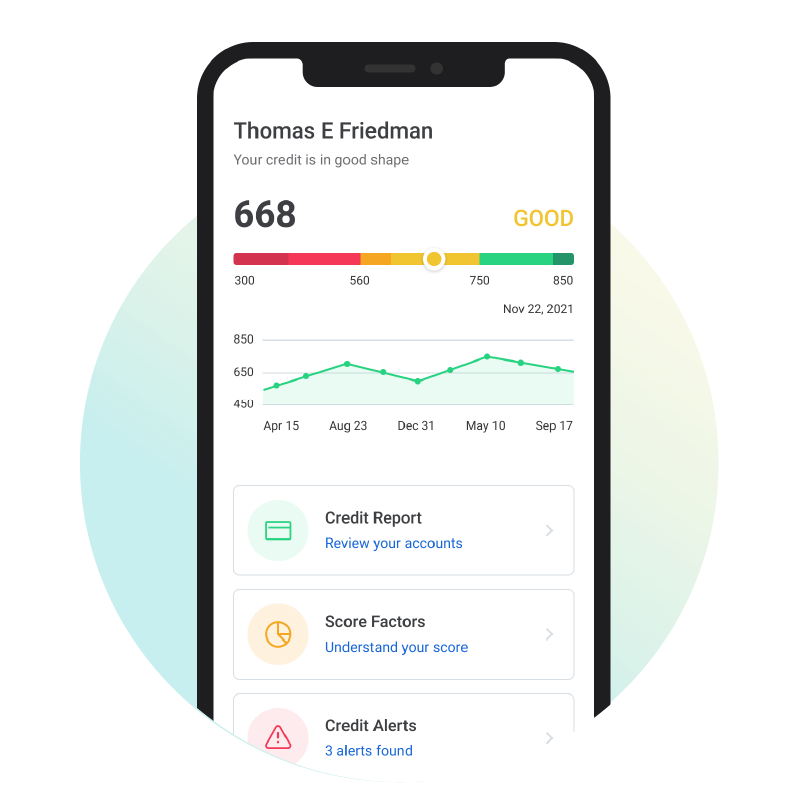At some point the phrase, “Million Dollar Idea” was coined; implying one could simply come up with a brilliant idea and print money. Anyone who has worked in any business, large or small, can attest that ideas don't generate cash flow on their own. It's the ability to execute upon ideas that differentiate the success of one idea from another. Said another way, an idea is only as good as a company's ability to prioritize and execute upon it.
If boats were a metaphor for companies, ‘execution’ would be the boats ability to move from point A to point B. Regardless of whether the boat is a public company (perhaps a cruise ship: comfortable, slow, perks-galore) or a start-up (perhaps a one-person kayak): uncomfortable, more nimble), there is a crew of people setting the direction of the vessel.
I often like to think of Array as a rowboat. For Array to be successful, every person needs to be rowing at the same pace, with the same force, at the same depth. If the boat has too many people on the left side of the boat, it goes in circles. People are off pace? The boat goes nowhere. Different rowing force? Good chance you’ll capsize. If anything is off, the boat doesn't go in the right direction. The people in the boat may have the same idea (to row toward land), but unless everyone is brought into which tactic everyone should use, and able to execute (find land!), it's a meaningless activity.
This mindset of ‘rowing together’ has helped Array build a culture of delivering results, at pace. Make no mistake, each company has to find their secret sauce to get them ‘from A to B’, but below are a few frameworks that we have leveraged and anyone can use to deliver value to their clients and their customers.
So let's talk about how we prioritize and execute upon ideas. And as we discuss, I find it helpful to imagine these tactics as ‘tools in the toolkit’, needing to be leveraged at the right time by the right people.
Prioritization
There are a million prioritization frameworks out there. The reality is, prioritization is a mix of an art and a science; quantitative and qualitative, data-driven and gut. Regardless of how much gut is used at the end of the day, as a sucker for structure, I find it helps to have all the data in-front of me informing the decision.
If you asked 100 different founders, product leads or innovators how they know an idea will be successful, chances are you’ll get 100 different answers. Some will say “customers will love the product”, others will say “the core technology is unique and differentiated from what's on the market today”, and others might tout the “strength in unit economics' “. The reality is, the answer can’t be any one of these reasons in a silo. This is why I love the DVF framework.
What is the DVF framework?
It’s a framework that takes three broad lenses for analyzing the strength of a product, business or idea. For Array, the considerations we give across Desirability, Viability and Feasibility change depending on the scenario given the various business models Array encounters (B2B2C, B2C, and sometimes B2B2B2C).
Desirability
Cross-company considerations:
What problem is this solving for the user?
Will the user want and (more importantly) NEED this?
Array-specific considerations:
What problem does this solve for our clients as well as the end user?
Viability
Cross-company considerations:
Will this product make money (not just revenue, but profit)?
What is the business value being driven?
Array-specific considerations:
How does this financially benefit our clients? What is their ROI on our product?
Feasibility
Cross-company considerations:
Is it technically and operationally possible to build and operate?
Array-specific considerations:
What compliance and legal considerations exist?
How do our relationships with our strategic partners impact our decisions?
As much as I’d like to take credit for the framework, it was popularized with the rise of start-up incubators and innovation centers (e.g. IDEO, Accenture) in the 2000’s. And while more than a decade old, it’s served as a loyal framework for innovators as they pressure test ideas.
A benefit to DVF, is that you can use it as strictly or loosely as you would like. In some cases, it's a helpful tool to organize thoughts. In other cases you can use it to score ideas across each D, V and F and to help stack rank priorities. Any which way, it’s a forcing mechanism to uncover biases and thoroughly think through what is first, second and third order of priority.
The below is an example of how to use DVF as an input into decision making. After you collaboratively score each of your ‘10’ ideas across Desirability, Viability and Feasibility on a scale from 1-10, plot your ideas to see how they compare to each other. In the below example, you’ll find that while idea 9 (top right) may make you a lot of money (viability) and the user wants is (desirable), it's completely not feasible (size of the circle), maybe it's not technically possible, or there’s significant regulatory concerns. That said, while slightly less desirable, idea #8 seems more likely for the organization to execute upon.

The goal here isn't for the model to tell you an answer. The goal is to facilitate a prioritization conversation between ideas and drive alignment on what ideas the company should and will pursue.
Key Watch-out!
As the lottery phrase goes, “you have to be in it, to win it.” That said, I wouldn't recommend entering every state and national lottery to try to ‘win it.’ The same can be said for choosing your bets; companies need to test ideas, but there should be focus in which bets are placed. Better said, be ruthless in which bets are placed.
Companies like Uber and Airbnb have recently taken this approach, arguably ‘right-sizing’ their bets to focus on a select few that can deliver outsized value. Uber has doubled down on ridesharing, Uber Eats, freight, all while divesting other bets that were previously made (autonomy, self-driving, international bikes and scooters etc). Similarly, the pandemic was a forcing mechanism for Airbnb to double down on suburban, long-term rentals, all while not as heavily investing in previous bets on Luxe and China.
Sure you have to be in it to win it, but do not become a jack of all trades and a master of none.
Execution
So you’ve prioritized which initiatives will move the needle for you and your company. Now it's time to get to work.
Again, different companies use different frameworks that help drive a company from point A to point B. Whatever the framework, it should drive:
Collaboration
Progress is not made in a silo. There needs to be cross-functional discussion, alignment and action.
and Accountability
There needs to be one single owner, owning the outcome of a single task, number, target etc.
At Array (as well as countless other companies included but limited to Google, Airbnb, Amazon, Microsoft, Adobe, FB, Uber, Netflix), we use OKRs.

Turn innovative ideas into impactful solutions with strategic execution.
What are OKRs?
O (Objectives); KR = Key Results
OKRs are a collaborative, goal-setting methodology used at all levels of an organization to set challenging, ambitious goals with measurable results that align to the company’s strategic objectives.
For example, last quarter Array brought added focus to providing a best in class experience for customers. We created an Objective + Key Result (below) to bring focus towards this initiative, clarity as to what levers would drive the objective and accountability as to who was responsible for driving.
Objective: Delight customers with every interaction
Key Result: Ensure detection of customer-facing outages by maintaining Mean Time to Detect <= 300sec
We follow a similar process quarterly to set, communicate and review our OKRs:
Setting
-
Objective Setting: Executive leadership team sets the Objectives (Objectives can stay the same from quarter to quarter depending on how the companies priorities evolve)
-
Level 1 Key Results (bottom’s up): Functional leads create initial KRs; what can we achieve in the quarter?
-
Level 1 Key Results (pressure testing & finalization): Functional leads share KRs, pressure test assumptions and dependencies. The team validates the overall company goals can be met with everyone's commitments.
Communicating
-
Share Level 1 KRs with the organization: It's critical for EVERYONE to be aware of the OKRs. It's a great way for each employee to ensure they are spending their time in the most effective way and serves as input into an individual's key results. At Array, the first all-hands of each quarter we do a retro on how we performed in the last quarter and a look-ahead to the KRs for the next.
Review
-
Update and Review on a 2-week cadence: Celebrate the ‘greens,’ understand how to unblock and support ‘yellows’ & ‘reds’
We at Array are certainly not perfect at OKRs; far from it. But we see real benefits:
Focus: OKRs help our team focus on the most important initiatives through a quarter. We pressure test each other on if what we are working on is the most impactful place we can be spending our time.
Alignment: OKRs have helped drive alignment between leadership (locking arms and committing to a key result) and within functional teams (clarity as to how everyone contributes to a team)
Accountability: we have clear line of sight into who is responsible for driving what, and where we need to re-shuffle should a priority initiative be lagging
How to get the most out of OKRs
Quantifiable and within reach: OKRs should be outcome oriented and should be stretch goals. Have patience with yourself and teams as they are right sizing their KR; it can be hard to get them ‘juuuust right’. Best practice says achieving 70-80% of a KR is a win.
Celebrate the greens, but focus on the yellows and reds: OKRs are not meant to create a ‘blame game’. Use them to facilitate open communication about what everyone (not just an OKR owner) needs to be doing differently
Prioritize OKR review at the leadership level: OKRs are not meant to be set and then revisited at the end of the quarter. Review and discuss on a bi-weekly or monthly cadence
What does this mean for you?
Look to your left. Look to your right. Are you paddling in sync with the others around you?
In less aquatic-terms: is there consensus (or buy-in) in your organization on what ideas/initiatives should be prioritized? Is there a collective understanding on what business goals are most important?
If ‘no’ to these questions, there’s a good chance these frameworks could benefit you and your company. Be proactive with your approach of going from idea to execution. Ruthlessly prioritize. Hold yourself and the people around you accountable. And most of all, don’t go popping champagne when you think you’ve come up with a good idea: the value is what you do with that idea.
Bring structure to your best ideas and align your team around what really matters.
Book a 15-min call.
Disclaimer: Array takes pride in ensuring the information we share is accurate and up-to-date; however, we understand that the information you read may differ from the product(s) and/or service(s) mentioned. We present the product(s) and/or service(s) you read about without warranty. We recommend you review the product and/or services’ terms and conditions before you make a decision. If you encounter inaccurate or outdated information, let us know by writing to: info@array.com.
Editorial Note: This content is the author’s opinion, expression, and/or recommendation(s).
Tags:
Thought Leadership
Post by Dan Goldstein
Dan Goldstein is the Director of Business Operations and Strategy at Array, specializing in boosting client engagement and driving revenue through the Array platform. With nearly a decade of experience in business strategy, Dan kicked off his career at Accenture and now helps lead Array’s corporate strategy.
Dan holds a bachelor's degree from the University of Texas - Austin from the Texas McCombs School of Business. In his free time, you might find Dan walking around Brooklyn in his neighborhood with his family.
Dan holds a bachelor's degree from the University of Texas - Austin from the Texas McCombs School of Business. In his free time, you might find Dan walking around Brooklyn in his neighborhood with his family.


